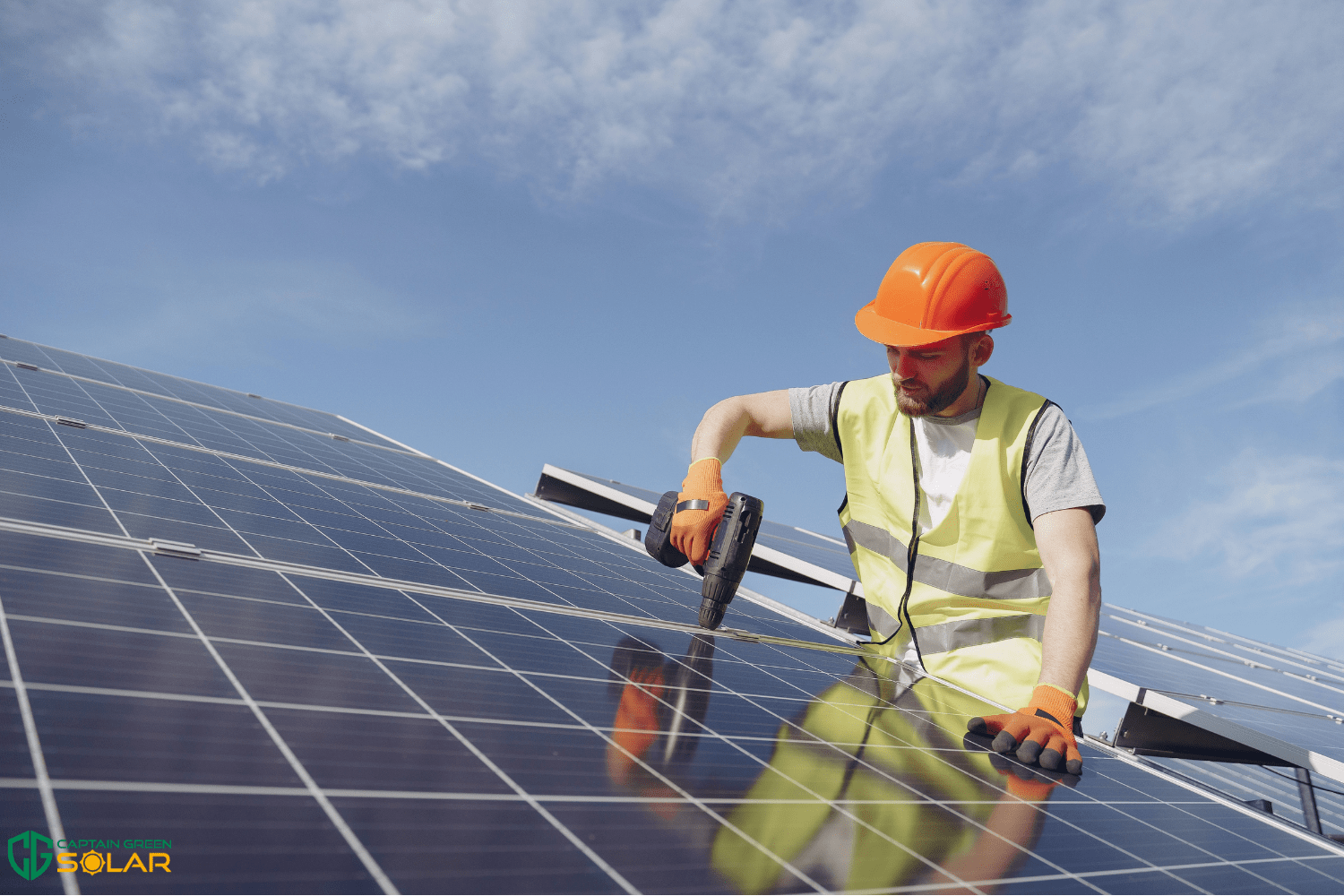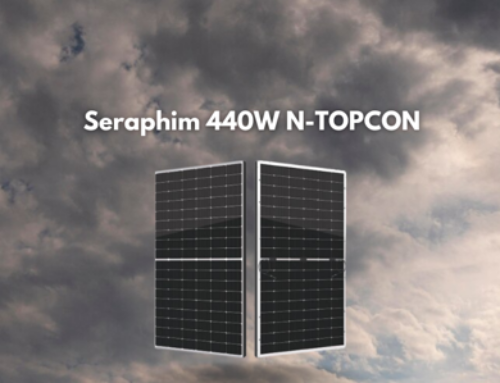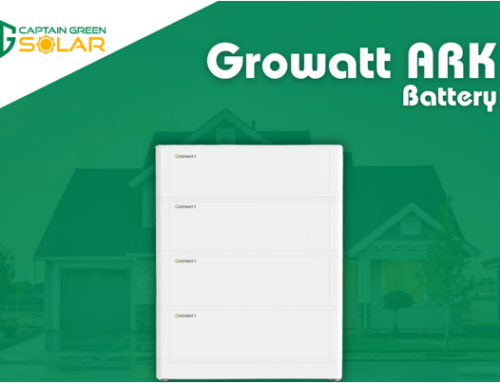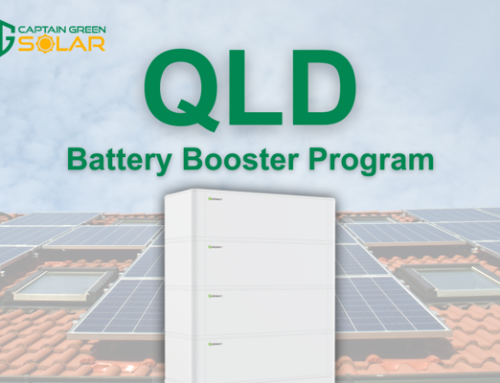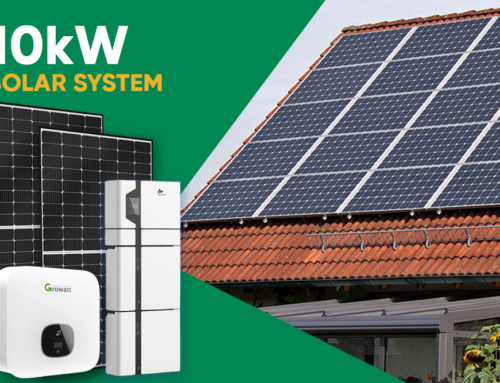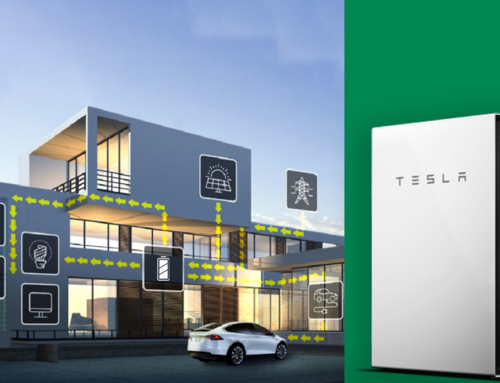Are you looking at installing solar panels and wondering, “how are solar panels installed on tile roofs?”
There is no denying the increasing popularity and utility of solar panels for Australian homes. As every year goes by, manufacturers are producing panels that are more efficient and less expensive. As we all look to reduce our carbon footprint, utilise renewable energy options and adopt sustainable ways of living, solar energy is an obvious choice.
If your roof is made from tiles, you may be wondering how solar panels may be installed and mounted. Fret not – the experts at Captain Green Solar are here to answer all of your questions.
How Are Solar Panels Installed on Tile Roofs?
Solar panels can be installed on many types of roofs using various techniques, depending on the material and pitch of your roof. On flat roofs, free-standing frames are designed and installed to optimise the orientation and tilt for energy production. L-shaped brackets are drilled into the existing roof on tin and metal roofs without any necessary alterations.
On tiled roofs, the most common method is installing mounting brackets to the rafters and using a rail system. Although tiles need to be moved, altered, and replaced, the process is less invasive than you think. Let’s look at a detailed breakdown of how to fix solar panels to tiled roofs.

How to Fix Solar Panels to Tiled Roofing
Pre-Installation Inspection and Measurement
The first step in any good installation process is taking measurements. Remotely or in person, the installers will assess your roof and determine the best place for installation based on the available space, pitch, and orientation. From here, they will take measurements to decide where to fix the brackets and rail system. After the roof has been assessed, the location of the inverter and wiring is also determined.
Removing Tiles
When considering, “how are solar panels installed on tile roofs?”, the initial stages are a little different to other types of roofs. When the installers first get up on your roof, they will begin to remove specific tiles in preparation for installing the mounting brackets. Based on the measurements and length of railing needed for your solar panels, the installation team will remove tiles so they can access the rafters and roof structure. The installers may also make minor additions to your roof cavity to create additional mounting points for the brackets.
Fitting the Mounting Brackets
After ensuring the correct spacing and measurements, the installers will attach stainless steel mounting brackets to the rafters. Once the brackets have been secured, the removed tiles are put back into their original position. To ensure the tiles sit flush and the roof’s integrity is maintained, the tiles will be ground or cut to fit around the newly installed brackets. Your installation team will also replace any broken or damaged tiles.
Well-practised installers will ensure that the mounting brackets have been thoroughly secured and the roof’s waterproofing has not been compromised. If needed, the solar panel installers will also fit flashing and waterproofing material around the newly installed brackets.
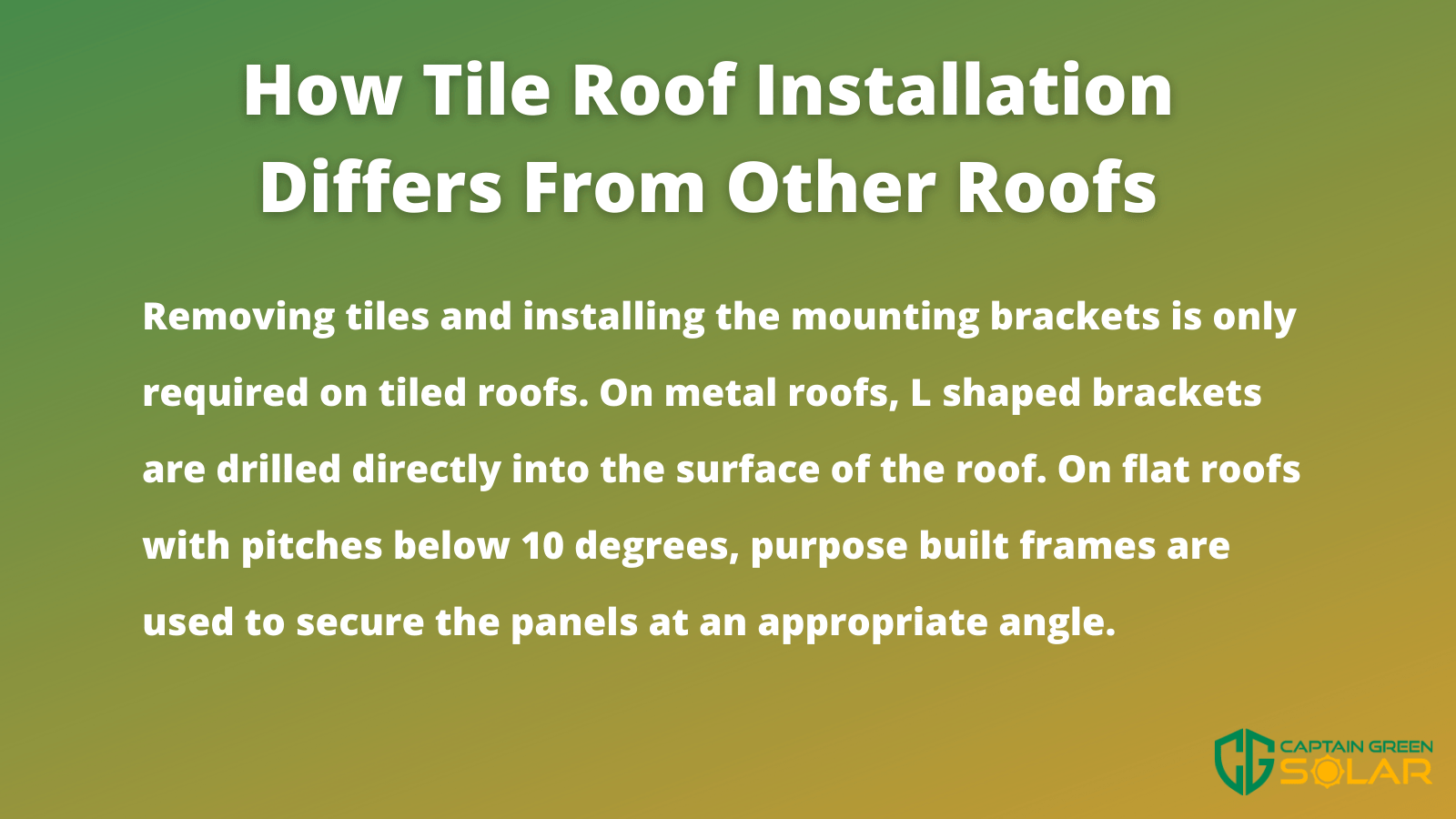
The initial work of removing tiles and fitting the brackets are unique to tiled roofs and could result in a slightly more expensive installation process. That being said, every roof is unique in its size, shape, orientation, and material. At Captain Green Solar, we conduct a thorough remote assessment and provide an honest quote before starting any work. Our careful pre-installation process ensures you enjoy the maximum benefits from your solar system for many years. For more information, contact our team today and get a quote for solar panel installation.
Still curious about how are solar panels installed on tile roofs? Read on to see how Captain Green install the panels and get the solar system up and running.
Installing the Rail System
Once the brackets are fixed, it’s time to install the rail system; let’s call it a tile roof solar mount. Aluminium alloy rails are placed across the roof and fixed to the brackets; these tracks are the anchor point for the solar panels.
How to Fit Solar Panels to Tiled Roofing Materials
With all the groundwork done, it is time to install the solar panels on the roof. The panels are attached using clips that bolt onto the panels’ edge and into the metal rails fixed to the mounting brackets. These specially designed brackets allow easy removal and maintenance if the areas under the newly installed panels need to be accessed. Now, the solar panels are securely fixed to the roof structure. The overall weight of the tiles will be less than 22 kilograms per square metre in accordance with Australian roofing guidelines. If you live in a cyclone area (unlikely in Australia), there may be requirements for additional bracing.
The raised space between the panels and tiles of the roof also creates a pocket of circulation which keeps the panels cool in the summer months. If you would like to know more about how solar panels cool your roof, we wrote a detailed guide on how the process works.
Connecting the Electrics
Now that we’ve answered the question of “How are solar panels installed on tile roofs?”, let’s look at some of the other points regarding the solar panel installation process.
As the panels are installed, the electrical cables underneath them are connected to one another to form a ‘string’. The ‘string’ is fed under a tile and through a void in the roof to the inverter. The installers will not only complete the on-roof installation but ensure all the wiring and electrics are taken care of. Once the installation is complete, it will not be necessary to access the inverter unless for maintenance or data retrieval processes. Most modern systems will wirelessly transmit all data to a smartphone application or web-based platform.
Overall, the installation process should only take 1-2 days and will not require significant modifications to your home. The only work that will require alterations is removing and modifying the tiles to install the mounting brackets and creating a path for the wiring to the inverter. Creating a path for the wiring is usually achieved by drilling a small, simple hole.
Can You Have Solar Batteries With Tiled Roofs?
To complement the energy generation from the solar panels on their tiled roofs, many property owners also enquire about solar battery storage. Solar batteries help to store the excess energy generated by your panels and make it available at night or when the sun isn’t shining. Solar storage is becoming increasingly affordable and accessible with improvements in the amount of energy they can hold and reductions in cost and size. They are easily integrated into an existing system or with a new system. Solar batteries can be used with any roof as they are typically installed near the inverter and another spot around your house.
Factors to Consider for Installation
We’ve covered how solar panels are fit to tiled roofing materials in great detail. However, before you move forward with solar panel installation, there are a couple of considerations to make to determine whether your roofing materials are suitable for solar panels.
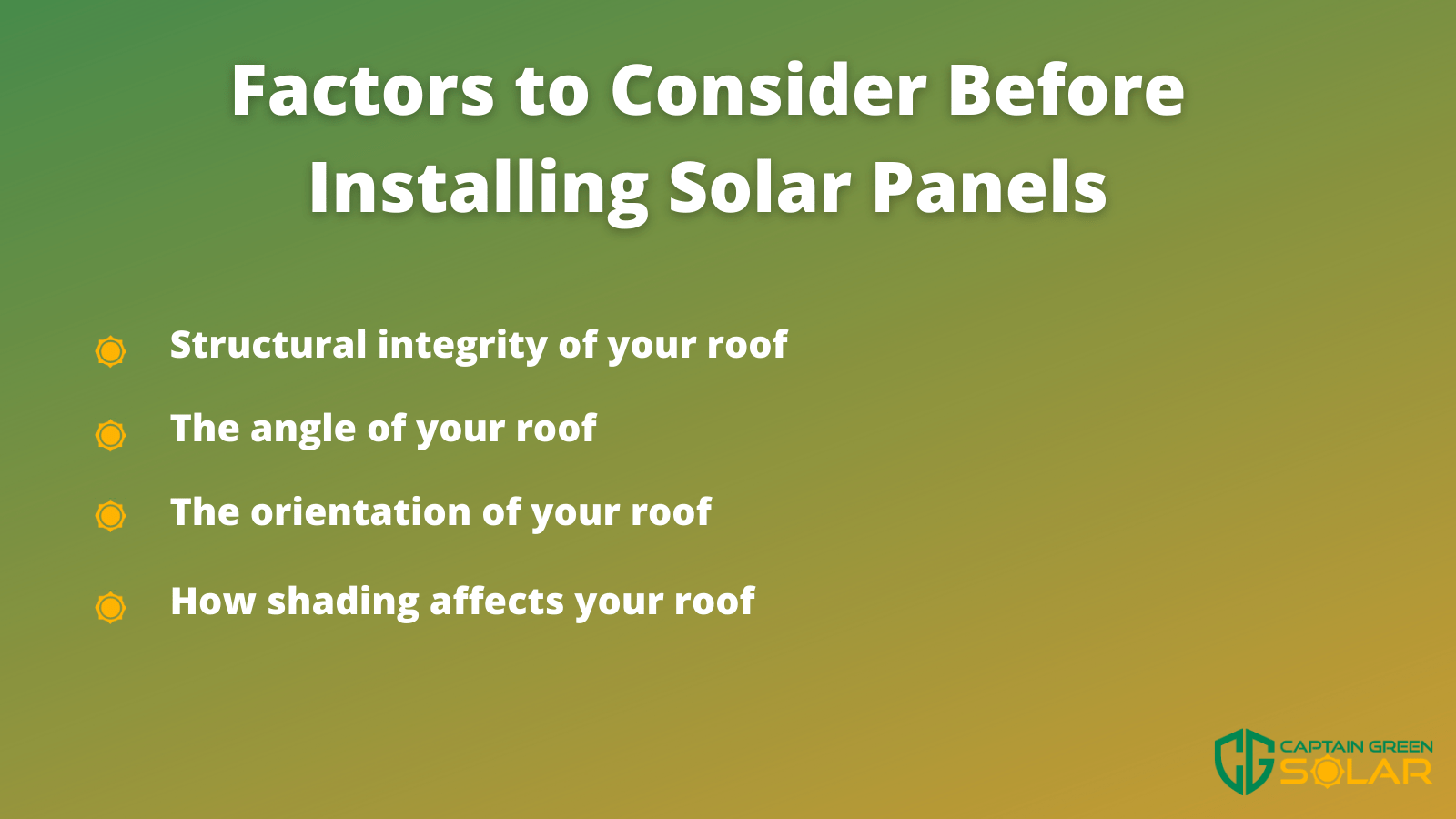
The first consideration is the integrity of your roof. Solar panels will add extra weight on a roof, and your solar panel installation technician will need to assess if it can support the panels. The structural integrity could also determine how many panels it can fit, as the bigger the system, the more weight there will be.
Solar panels function best on roofs with a pitch between 10 to 45 degrees. Flatter roofs can utilise purpose-built frames or tilting brackets to get the panels at the correct position: however, this could also increase the cost of installation.
Depending on the architecture of your roof, you may have a single slope or various faces. Solar panels perform best on north-facing roofs as they receive the greatest amount of sun throughout the day. Eastern and western orientations are also suitable; however, south-facing roofs are not suitable.
Solar panels rely on direct sunlight to produce solar energy. Before installing a solar system, you need to ensure your roof receives as much sunlight as possible. If any shading can be reduced by clearing away trees of objects, it is advisable to do so. If shading cannot be avoided in certain areas, the installer will place the panels in the most suitable location.
Call In the Experts
If you are still unsure about how solar panels are installed on a tile roof, or would like to know more about our solar panel installation services, Captain Green are here to help. We have installed over 270,000 solar panels, many of which have been on tiled roofs. With over a decade of experience, we take care of every roof we work on and ensure our customers get the best results for their solar systems.
Whether you are looking for solar panels, inverters, battery storage or complete packages, we have a solution for you. For more information about our services or to arrange a quote, get in touch with us today.

